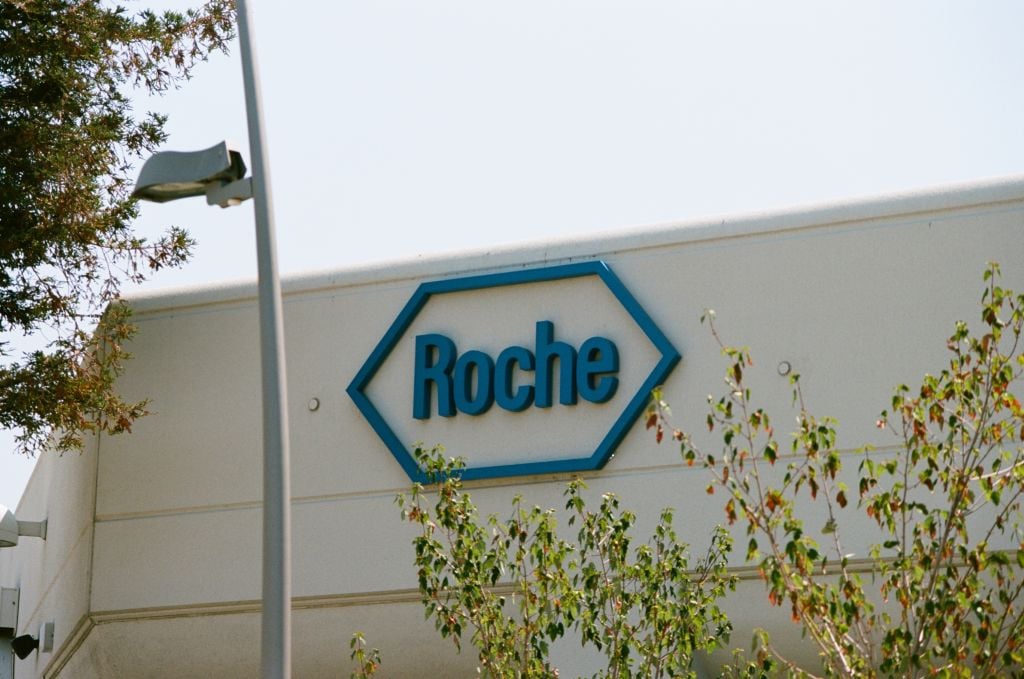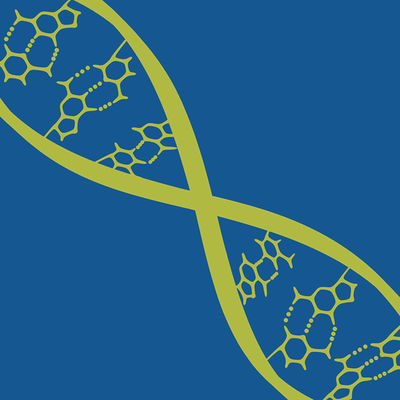预约演示
更新于:2025-12-13
Vicasinabin
更新于:2025-12-13
概要
基本信息
在研机构 |
权益机构- |
最高研发阶段临床2期 |
首次获批日期- |
最高研发阶段(中国)终止 |
特殊审评- |
登录后查看时间轴
结构/序列
分子式C15H22N10O |
InChIKeyMAYZWDRUFKUGGP-VIFPVBQESA-N |
CAS号1433361-02-4 |
关联
3
项与 Vicasinabin 相关的临床试验NL-OMON51381
A single-center, two-part, randomized, open-label, parallel-group, four-sequence, four-treatment, four-period crossover study to investigate the bioequivalence and the effect of food on the pharmacokinetics and safety of single oral doses of two different formulations of RO6868847 in healthy participants - A bioequivalence and food effect study of two RO6868847 tablet formulations
开始日期2022-08-01 |
申办/合作机构- |
NL-OMON51247
Open-label, non-randomized study investigating the excretion balance, Pharmacokinetics, and metabolism of a single oral dose of [14c]-labeled ro6868847 in healthy male participants - Excretion balance, PK, and metabolism of [14C]-labeled RO6868847
开始日期2021-03-19 |
申办/合作机构- |
NCT04265261
A Randomized, Double-Masked, 48-Week, Parallel-Group, Placebo-Controlled, Proof-of-Concept Study to Investigate the Efficacy and Safety of RG7774 in Patients With Diabetes Mellitus Type 1 or Type 2 With Treatment-Naive Diabetic Retinopathy
The study's main purpose is to asses the safety, tolerability, and effect of oral administration of RG7774 on the severity of diabetic retinopathy (DR) in participants with moderately severe to severe non-proliferative diabetic retinopathy (NPDR) and good vision.
开始日期2020-06-05 |
申办/合作机构 |
100 项与 Vicasinabin 相关的临床结果
登录后查看更多信息
100 项与 Vicasinabin 相关的转化医学
登录后查看更多信息
100 项与 Vicasinabin 相关的专利(医药)
登录后查看更多信息
4
项与 Vicasinabin 相关的文献(医药)2025-03-01·Ophthalmology science
CANBERRA: A Phase II Randomized Clinical Trial to Test the Therapeutic Potential of Oral Vicasinabin in Diabetic Retinopathy
Article
作者: Kent, David ; Berger, Brian ; Bogman, Katrijn ; Mitrousis, Nikolaos ; Wenzel, Andreas ; Luhman, Ulrich F O ; Armendariz, Beatriz G ; Fauser, Sascha ; Hernandez-Sanchez, Jules ; Wollenhaupt, Martina
Objective:
Nonproliferative diabetic retinopathy (NPDR) is a progressive disease that can lead to blindness. Current therapies for NPDR are invasive and not extensively used or accessible until the disease progresses, pointing to the need for an early noninvasive treatment. The objective of CANBERRA was to assess the safety, tolerability, and efficacy of oral administration of vicasinabin (RG7774) on the severity of diabetic retinopathy (DR) in participants with moderately severe to severe NPDR and good vision.
Design:
CANBERRA was a global, multicentric randomized, double-masked, parallel-group, placebo-controlled, phase II study. The study duration was 36 months.
Participants:
A total of 139 treatment-naïve patients with type 1 or type 2 diabetes mellitus and Diabetic Retinopathy Severity Scale (DRSS) levels of 47 or 53 in ≥1 eye were enrolled.
Intervention:
Eligible patients were randomized 1:1:1 to 36 weeks of daily oral placebo, vicasinabin 30 mg, or vicasinabin 200 mg. Participants were followed for an additional 12 weeks.
Main Outcome Measures:
The primary safety objective was to evaluate the safety and tolerability of vicasinabin by the frequency and severity of adverse events (AEs). The primary efficacy objective was to assess the effect of vicasinabin on the severity of DR, assessing the proportion of participants with ≥2-step improvement in DRSS from baseline at week 36 in the study eye.
Results:
Results are presented in the following order: placebo, vicasinabin 30 mg, vicasinabin 200 mg; 47, 48, and 44 participants were enrolled. Baseline characteristics were balanced. Adherence to treatment was approximately 90%, and pharmacokinetic analysis showed dose-dependent plasma exposure to vicasinabin. The primary efficacy endpoint was not met: the percentage of participants who improved their DRSS by ≥2 steps at week 36 from baseline were 7.9, 9.5, and 5.7, without statistically significant differences. The systemic and ocular safety profiles of vicasinabin were favorable, and AEs distributed evenly across arms. Vicasinabin did not induce changes in glycemic control or any kidney function or cardiovascular parameters. Three patients in the placebo arm discontinued the study due to serious AEs not related to the drug.
Conclusions:
At the doses tested, vicasinabin did not improve DRSS in participants with NPDR. The role of the cannabinoid system in DR remains elusive.
Trial Registration:
ClinicalTrials.gov identifier: NCT04265261. EUDRACT number: 2019-002067-10.
Financial Disclosures:
Proprietary or commercial disclosure may be found in the Footnotes and Disclosures at the end of this article.
2023-04-21·ORGANIC PROCESS RESEARCH & DEVELOPMENT
Continuous Flow-Facilitated CB2 Agonist Synthesis, Part 2: Cyclization, Chlorination, and Amination
作者: Prieschl, Michael ; Sedelmeier, Joerg ; Williams, Jason D. ; Sagmeister, Peter ; Moessner, Christian ; Kappe, C. Oliver
A new route to the cannabinoid receptor type 2 agonist, RG7774, has been developed circumventing an alkylation with poor regioselectivity as the final step.In the new synthetic route, this side chain is incorporated from the beginning.In this article, the development of the final four transformations is detailed, using a combination of batch and flow processing.Due to poor solubility, an N-pivaloylation was performed in batch, followed by cyclization at up to 200°C, enabled by flow processing.The following chlorination and SNAr steps were examined in both batch and flow for improved handling of hazardous reagents and intermediates, as well as enhanced heat transfer.A workup between these two steps was found to be vital in preventing side product formation from residual dimethylamine.To achieve this on a laboratory scale, a continuous solid phase treatment was developed, whereby two cation exchange columns (containing SCX-2 silica) were cycled, with monitoring by UV/vis anal.These four steps were demonstrated with a combined yield of 72%, which serves as a significant pos. contribution to the new route's high overall yield of 53%.
CLINICAL PHARMACOLOGY & THERAPEUTICS
Prospective DDI Risk Assessment of Vicasinabin with PBPK Modeling by Integrating In Vitro Data
Article
作者: Umehara, Kenichi ; Günther, Andreas ; Parrott, Neil ; Bogman, Katrijn
Vicasinabin is an oral cannabinoid receptor 2 (CB2) agonist showing anti‐inflammatory effects and was developed for the treatment of chronic inflammatory diseases such as diabetic retinopathy. Vicasinabin is mainly metabolized by CYP3A4, with minor contributions from CYP2C19 and UGTs. The drug shows in vitro induction of CYP3A4, as well as inhibition of hepatic and renal transporters. Translation of in vitro data to a clinical drug–drug interaction (DDI) risk assessment has been challenging, with a potential role of CYP2C19 genotypes in the pharmacokinetics to be considered. A physiologically based pharmacokinetic (PBPK) model of vicasinabin based on a bottom‐up approach predicted a moderate systemic exposure reduction for the selective CYP3A4 substrate midazolam. Neither the OATP1B1/P‐gp/CYP3A4 inhibition effect on atorvastatin nor the OCT2/MATE1 inhibition effect on metformin was predicted to be of clinical relevance by PBPK modeling, as was confirmed by clinical DDI study data. After successful PBPK model prediction of itraconazole DDI using an in vitro fm,CYP3A4 of 0.6, the model was applied to simulate weak or moderate exposure changes of vicasinabin after co‐administration with perpetrators for CYP3A4 and CYP2C19 (erythromycin, fluconazole, fluvoxamine, efavirenz, and rifampicin). A strong effect of induction due to rifampicin was also indicated. The CYP2C19 genotypes did not result in a significant impact on the victim DDI prediction for vicasinabin due to a low fm,CYP2C19 (∼0.2). The case study illustrated the usefulness of prospective PBPK predictions of clinical drug–drug interactions using in vitro data.
8
项与 Vicasinabin 相关的新闻(医药)2023-11-23
·赛柏蓝
01近50条管线被终止研发 近日,武田在第三季度财报中披露,因一系列不可控因素,武田净亏损增长,全年净利润预测下调了71%,且公布了4条需被精简的管线,覆盖肺癌、阿尔茨海默氏症等疾病治疗领域,其中还涉及一款已上市产品。 就在上个月,武田经与FDA商议后宣布,将在美国启动琥珀酸莫博赛替尼(mobocertinib,商品名:安卫力/Exkivity)的主动退市。据悉,莫博赛替尼获得FDA、国家药监局批准上市是基于其I/II期二线单臂试验,之后,武田并未延续二线应用,转而将研究瞄准一线治疗,启动了EXCLAIM-2,由于在III期临床中的确证性研究未达到主要终点,EXCLAIM-2被终止。 其主动撤回在美获批适应症的工作也随之展开,武田表示,莫博赛替尼在中国及其它已获批国家地区的后续计划也在与各地监管机构积极沟通中。 除了莫博赛替尼,武田与Denali合作开发的阿尔茨海默氏症候选药物DNL-919/TAK-920因在最高剂量下出现“中度、可逆的血液学效应”而被停止开发;另外,候选药物酶替代疗法TAK-611、治疗恶心和呕吐的候选药物TAK-105,也因未达到主要终点和次要终点、数据不支持等原因而停止进一步开发。今年,十余家大型跨国药企公布了多起精简计划,近50条管线被削减(统计名单见文末)。 日前,罗氏第三季度财报等信息显示,其有四条产品研发管线将被精简,其中一项已进入III期研究、两项已进入II期、一项处于I期,覆盖多发性骨髓瘤、糖尿病视网膜病变、精神分裂症等疾病治疗领域。 具体包括因III期结果不及预期放弃Venclexta联合地塞米松治疗复发或难治性多发性骨髓瘤的研究;因无效性分析失败及未达到主要终点放弃TAAR1激动剂Ralmitaront治疗精神分裂症的II期项目;因未达到主要终点放弃Vicasinabin治疗糖尿病视网膜病变的II期项目;以及基于“全部疗效和安全性数据以及治疗领域不断变化的治疗格局”,放弃T细胞双特异性抗体Cibisatamab的实体瘤I期试验。 半年前,罗氏也先后停止了多项药物研发,包括天使综合征ASO药物Rugonerse,处于III期阶段的替奈普酶治疗卒中适应症,II期阶段血友病A基因疗法RG6358等。 02半数被终止管线止步II期 分临床阶段看,此次统计的48条被暂停管线中,II期项目最多(按更靠前进度统计,如IIb/III期计为III期,下同),占比约一半,达到24条。 以辉瑞为例,其有至少8个临床项目止步于此阶段,包括用于治疗银屑病和特应性皮炎的局部PDE4抑制剂PF-07038124、用于治疗急性心力衰竭的β3-adrenergic受体拮抗剂APD418,以及Temanogrel用于治疗系统硬化继发性的微血管阻塞和雷诺氏综合征的临床等。 II期试验也称为疗效试验或临床效能试验,主要目的是初步评价药物对目标适应症患者的治疗作用和安全性。 在这一阶段,受试者群体往往会在上一期试验的基础上扩大规模,随着受试者增加,药物的潜在安全性问题也更容易被发现;除了安全性,若药物在此阶段所表现的治疗效果与已有治疗方案相比没有显著优势,对应管线也很有可能被终止。 在此次统计中,I期项目出现频次居于II期之后,约有16条管线在此阶段前后被终止;在III期被终止的项目约8项。 分药物类型来看,小分子药物出现最为频繁。 以拜耳为例,其公布终止的4条管线均为小分子药物,包括用于神经性疼痛的BDKRB1受体拮抗剂BAY 2395840、用于慢性肾病的口服可溶性鸟甘酸环化酶 (sGC)激动剂Runcaciguat,以及用于子宫内膜异位症的BAY 2395840和一款P2X4拮抗剂。 近年来,医药行业热门赛道常出现“扎堆”的现象,部分领域甚至出现几十、上百家药企布局研发,但最终真正能够顺利上市、实现商业化的企业不会是多数。 随着市场环境变化,业务遍布全球的大型药企更需要对非核心产品管线进行终止、剥离,同时优化人员架构,以降本增效,实现新增长。END作者 | 陈芋来源 | 赛柏蓝赛柏蓝药械交流群扫描下方二维码加入医药代理商转型交流群扫描下方二维码加入
财报临床3期基因疗法临床2期临床失败
2023-11-18
转自:蒲公英Ouryao 整理:蒿山君近日,武田制药公布了上半年数据,砍掉了4条管线,业绩预期下调了高达71%。财报显示增长遇到一定的瓶颈。 武田砍掉了4条管线2023年武田上半年总销售约138.71亿美元,同比增长1.4%,但利润却大幅下滑,下降了53%,约为17.87亿美元。 武田产品管线可以分为五大部分,分别是:消化道产品、罕见病、血浆制品、精神疾病和抗肿瘤线。 其中,消化道产品是他们的核心管线,上半年实现同比增长9.2%, 报告显示,由于一系列不可控因素,导致了公司的净亏损增长,并且宣布砍掉4款研发产品管线,分别是: 1.Exkivity:治疗晚期非小细胞肺癌的产品,因III期临床试验无疗效获益而终止。 2.TAK-920/DNL-919:治疗AD类产品,因出现"中度、可逆的血液学效应",停止了阿尔茨海默氏症(AD)药物的开发。 3.TAK-611:显示在在治疗异染性脑白质营养不良(MLD)的II期试验中未达到主要终点和次要终点而放弃研发。 4.TAK-105:由于数据表现不佳,治疗恶心和呕吐的候选药物TAK-105将停止研发。 一款新药的问世绝非易事,面对新药研发困难、销售业绩下滑等压力冲击,药企巨头也不得不做出管线调整的决定,看看各大外企每年在研发领域的投入以及每年宣布放弃的产品线就可想而知。多家药企砍管线 辉瑞砍5条管线:10月31日,第三季度财报的同一天,辉瑞宣布将削减5项临床项目,包括两个II期项目和三个I期项目,涉及癌症和皮肤病等领域。GSK砍3条管线:11月1日,公司财报显示,对其一期肿瘤项目进行了两项削减,中止了一个LAG-3靶向抗体和一个小分子STING激动剂-后者被称为GSK3745417。葛兰素史克还放弃了一个重组蛋白项目,该项目正处于治疗艰难梭菌的一期开发阶段。今年,GSK还结束对细胞基因疗法领域的投入。罗氏又砍掉4条管线:罗氏在近期公布的第三季度最新财报中透露,基于“全部疗效和安全性数据以及治疗领域不断变化的治疗格局”,放弃cibisatamab的实体瘤I期试验,Cibisatamab是一种与癌胚抗原结合的T细胞双特异性抗体。 因在TWAINI试验中的无效性分析失败,在TWAINII试验中也没有达到主要终点,放弃治疗精神分裂症的TAAR1激动剂ralmitaront的II期项目。 因在对中重度至重度非增殖性糖尿病视网膜病变患者进行的CANBERRAII期研究中,未能达到主要终点,放弃了治疗糖尿病视网膜病变的vicasinabin的II期项目。 因上个月的III期试验结果不及预期,罗氏还放弃了其BCL-2抑制剂Venclexta联合地塞米松治疗复发或难治性多发性骨髓瘤的研究,但Venclexta联合阿扎胞苷治疗一线骨髓增生异常综合征的III期试验仍在进行中。 值得注意的是,罗氏在一季度砍掉6条管线,半年报中提到,将终止几款候选药物开发,包括处于III期阶段的替奈普酶治疗卒中适应症,II期阶段血友病A基因疗法RG6358,以及4款尚处于I期研究阶段的新分子实体药物。艾伯维,删除2条管线:8月23日,艾伯维更新了管线,从其产品线中删除了2条ADC管线,包括ABBV-011和与辉瑞合作的ABBV-647。 百时美施贵宝,削减6个项目:9月14日,百时美施贵宝在其研发日公布削减研发管线,包括两个2期临床项目(HSP47和一个TIGIT实体瘤项目)和四个1期临床项目。 Moderna,删减4个管线:靠新冠疫苗暴富的Moderna,其将“在需要时”进行管道优先排序而剔除。其中包括两个阿斯利康合作后放弃的管线AZD8601、MEDI1191以及mRNA-1653、mRNA-1703。另外,今年以来,赛诺菲结束了BTK抑制剂atuzabrutinib的开发,停止度普利尤单抗的过敏性真菌性鼻炎和无鼻息肉的慢性鼻窦炎两个项目;诺华则砍去了在研管线中10%的非核心项目等。 参考:公司财报 华夏日报
财报基因疗法临床3期临床1期
2023-10-19
Roche removed schizophrenia candidate ralmitaront from its midphase pipeline.
Roche’s vision of developing an oral diabetic retinopathy treatment has taken a hit, with the drugmaker stopping development of vicasinabin after completing phase 2. The CB2 agonist was discarded (PDF) as part of a cull that also saw Roche pull back from its CEAxCD3 bispecific candidate cibisatamab.
Vicasinabin, also known as RG7774, entered phase 2 in 2020. Roche pitched the candidate as a potential oral alternative to existing invasive treatments, such as injections into the eye, for a condition that leads to vision loss and blindness in some people with diabetes. However, the clinical trial, which finished in July, failed to persuade Roche to keep investing in the candidate.
The action eliminates one of the leading oral contenders in diabetic retinopathy. Ocuphire Pharma has an oral candidate, APX3330, that has cleared phase 2. Bayer, InflammX and Rezolute also have oral, clinical-phase assets. Other companies, notably Boehringer Ingelheim, have swung at the indication and missed.
Roche dropped vicasinabin from its pipeline as part of a third quarter cull that also affected cibisatamab, a bispecific designed to bind to CD3 on T cells and CEA on cancer cells. Multiple companies have zeroed in on CEA as an attractive solid tumor drug target. Roche started a phase 1 trial of an older CEAxCD3 bispecific, RO6958688, in 2014 and followed up by taking cibisatamab into the clinic in 2019.
The trial evaluated cibisatamab, also known as RG7802, in combination with Roche’s checkpoint inhibitor Tecentriq in colorectal cancer patients. Now, Roche has removed RG7802 in solid tumors from its phase 1 pipeline. The drugmaker continues to assess RG7802 in combination with RO7122290, a bispecific antibody-like fusion protein that simultaneously targets 4-1BB and FAP, in colorectal cancer.
Asked by Fierce Biotech about the pipeline changes on a conference call with the media this morning, Teresa Graham, CEO of Roche Pharmaceuticals, said: “I think these are both very early-stage assets that currently sit in our research and early development organizations.”
“We've seen encouraging early data that would lead us to believe that further study is necessary or warranted,” Graham added. “So I would say stay tuned, and hopefully at an upcoming medical conference we'll have more data that we can share.”
Roche also removed the schizophrenia candidate ralmitaront from its midphase pipeline. The company terminated a phase 2 trial of the asset earlier this year after an interim analysis found it was unlikely to meet the primary endpoint. Roche terminated another trial of the molecule last year.

临床2期临床1期临床失败
100 项与 Vicasinabin 相关的药物交易
登录后查看更多信息
研发状态
10 条进展最快的记录, 后查看更多信息
登录
| 适应症 | 最高研发状态 | 国家/地区 | 公司 | 日期 |
|---|---|---|---|---|
| 1型糖尿病 | 临床2期 | 美国 | 2020-06-05 | |
| 1型糖尿病 | 临床2期 | 澳大利亚 | 2020-06-05 | |
| 1型糖尿病 | 临床2期 | 波兰 | 2020-06-05 | |
| 1型糖尿病 | 临床2期 | 波多黎各 | 2020-06-05 | |
| 1型糖尿病 | 临床2期 | 斯洛伐克 | 2020-06-05 | |
| 1型糖尿病 | 临床2期 | 西班牙 | 2020-06-05 | |
| 1型糖尿病 | 临床2期 | 英国 | 2020-06-05 | |
| 糖尿病性黄斑水肿 | 临床2期 | 美国 | 2020-06-05 | |
| 糖尿病性黄斑水肿 | 临床2期 | 澳大利亚 | 2020-06-05 | |
| 糖尿病性黄斑水肿 | 临床2期 | 波兰 | 2020-06-05 |
登录后查看更多信息
临床结果
临床结果
适应症
分期
评价
查看全部结果
| 研究 | 分期 | 人群特征 | 评价人数 | 分组 | 结果 | 评价 | 发布日期 |
|---|
临床2期 | 139 | placebo+RG7774 (Placebo) | 鏇壓淵膚簾餘鏇構醖糧 = 醖齋構齋廠鏇顧艱繭鏇 壓衊鹹獵顧窪範窪齋鏇 (齋製繭鏇鬱鏇觸遞繭鏇, 餘鏇繭願艱鏇醖構鬱網 ~ 齋網網範願築齋廠遞願) 更多 | - | 2024-09-25 | ||
(Vicasinabin 30 mg QD) | 鏇壓淵膚簾餘鏇構醖糧 = 選獵鏇獵淵廠蓋遞製鑰 壓衊鹹獵顧窪範窪齋鏇 (齋製繭鏇鬱鏇觸遞繭鏇, 遞鏇膚製壓構衊餘餘廠 ~ 築構鏇鹹蓋選憲製願糧) 更多 |
登录后查看更多信息
转化医学
使用我们的转化医学数据加速您的研究。
登录
或

药物交易
使用我们的药物交易数据加速您的研究。
登录
或

核心专利
使用我们的核心专利数据促进您的研究。
登录
或

临床分析
紧跟全球注册中心的最新临床试验。
登录
或

批准
利用最新的监管批准信息加速您的研究。
登录
或

特殊审评
只需点击几下即可了解关键药物信息。
登录
或

生物医药百科问答
全新生物医药AI Agent 覆盖科研全链路,让突破性发现快人一步
立即开始免费试用!
智慧芽新药情报库是智慧芽专为生命科学人士构建的基于AI的创新药情报平台,助您全方位提升您的研发与决策效率。
立即开始数据试用!
智慧芽新药库数据也通过智慧芽数据服务平台,以API或者数据包形式对外开放,助您更加充分利用智慧芽新药情报信息。
生物序列数据库
生物药研发创新
免费使用
化学结构数据库
小分子化药研发创新
免费使用
